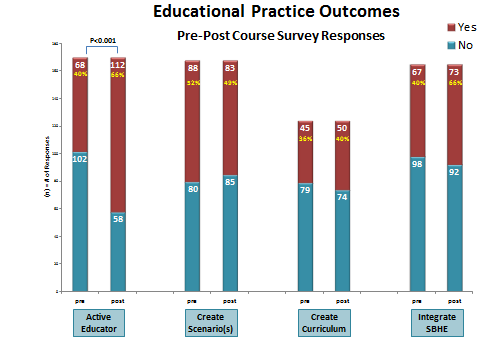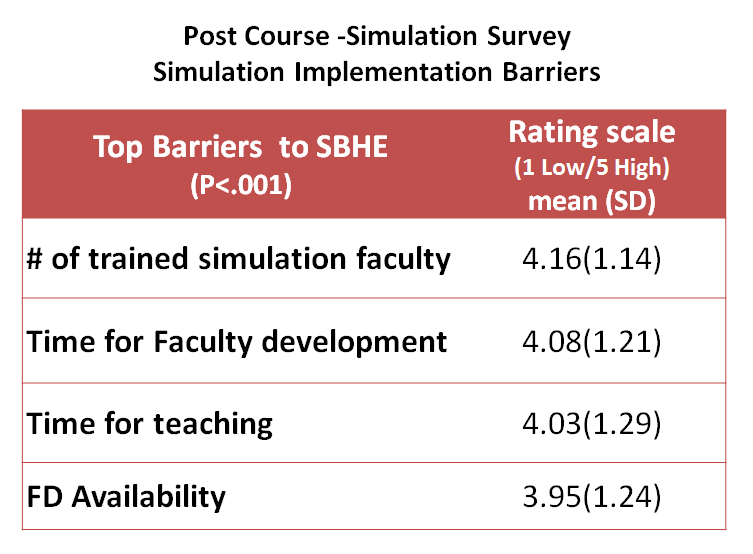
| Theme: 10BB Simulation 2 | |||
 |
||||||
| International Faculty Development in Fundamental Simulation Method for Japanese Healthcare Educations |
 |
|||||
|
||||||
Fundamental Simulation Instructional Methods (FunSim) is an international simulation faculty development (FD) course developed at SimTiki and adapted for Japanese healthcare educators. There are English (FunSim-E) and Japanese (FunSim-J) language versions. The impact of FD for simulation based healthcare education (SBHE) on faculty educational practices or outcomes is unclear. FD outcomes studies can focus and support improvement in instructional design and content for FD programs. We examined FunSim outcomes to guide course improvements and modifications, and to better understand FD needs.
1.Describe demographics of Japanese healthcare educators enrolled in FunSim-J
2.Survey Japanese healthcare educator pre- and post- FunSim educational practice outcomes.
3.Identify barriers to implementation of SBHE methods for Japanese educators.
A 73 item web-based questionnaire was distributed in 2014 to all Japanese participants who completed FunSim-J or FunSim-E between 2011 and 2013. FunSim course outcomes were assessed at Kirkpatrick model levels one (Reaction); two (Learning); and three (Behavior). A Likert-type rating scale (1-7) was used for the course evaluation (level one), and for confidence and competency (level two); four different types of Yes-No questions were used for level three outcomes. Barriers to implementation of SBHE were rated from 1 (low barrier) to 5 (high barrier) for twelve pre-defined potential barriers.
Response Rate : 178 /283 (63%)
FunSim Language : 47.8% English / 57.3% Japanese
Participants : Japanese healthcare educators - 45.6% physicians / 35.7% nurses.
Course Evaluation :
FunSim–E vs FunSim–J: No differences in course “language barrier” survey questions 88% of responses were >4 on 7 rated course evaluation items. [1-strongly unhelpful / 7- strongly helpful]
Outcomes:
Confidence and competency scores were lower “at the time of survey” compared to “at the end of the course” (P< 0.05). Pre/Post-course active teaching increased from 40 % to 66% ofparticipants (P< 0.001).
Barriers :
Equipment, funding, technical challenges and space factors were relatively unimportant compared to human and professional factors


FunSim participants reported positive course feedback and no critical language barriers. Following FunSim there was an increase in participant active SBHE teaching, a Kirkpatrick Level three outcome. Attribution of implementation outcomes to the FD course in this selected group may be premature due to multiple potential confounders and selection bias. Our findings document that FunSim FD is appropriately targeted to implementation focused participants, and the content matches their leaning needs (Level 1 & 2 outcomes). Barriers to implementation of SBE are primarily human-factors. Protected time, and faculty development must be addressed to establish effective SBHE systems. Further research is needed to identify durability of FD outcomes.

 Send Email
Send Email